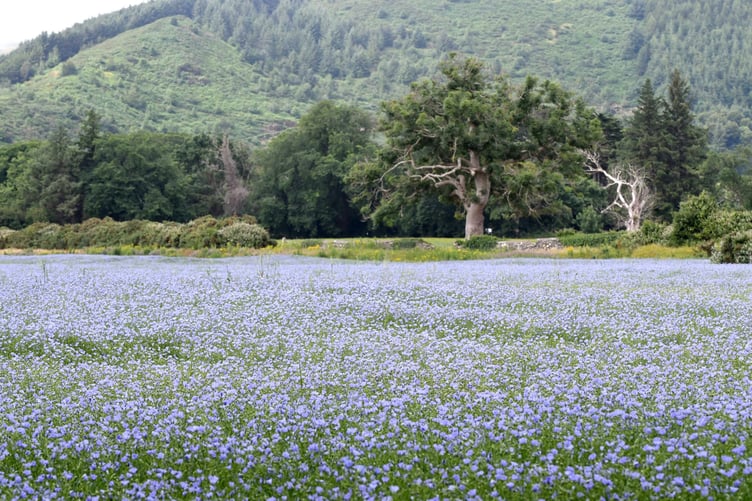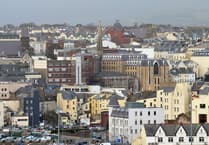Usually it’s cute young animals that attract the public’s attention and have their pictures posted on Facebook but this year the biggest talking point has been the ‘blue fields’ along both sides of the Sulby Straight.
The crop causing the stir is linseed, or flax as it is known in the US and Australia.
Farmer Will McMillin who has planted 100 acres of it this year says: ‘It is nice when it comes into flower.’
Will adds that he has been growing linseed for around 10 years but in different fields where it has never caused so much attention before.
The entire crop is grown under contract for a company in the UK.
Will said: ‘It seems to grow okay in the Isle of Man, there’s not too much pest pressure on the crop here.’
He is referring to the fact that in parts of the UK both linseed and oil seed rape crops have been devastated in recent year by the flea beetle.
This follows the banning of neonicotinoid seed treatments to tackle the threat of the pest.
Flea beetles can severely check growth and stunt young plants before they have a chnce to get properly off the ground and, where pest pressure is high, can result in plant loss. This has deterred many farmers in those areas from planting crops of oilseed rape and linseed, and this has meant an opportunity for arable farmers like Will on the island which is not so badly affected by the pest.
Linseed is grown for both its seed and the fibre in its stem. It is thought to be one of the oldest fibre crops in the world and is used to make everything from rope and twine to fine linen cloth.
The seeds can be ground and processed to make linseed oil which has many uses including oiling cricket bats and in animal feeds. It is also used to make biofuel. Linseeds are also a ‘superfood’, being a rich source of Omega-3 fatty acids, the same nutrient that is found in oily fish.




-(1).jpeg?width=209&height=140&crop=209:145,smart&quality=75)
Comments
This article has no comments yet. Be the first to leave a comment.